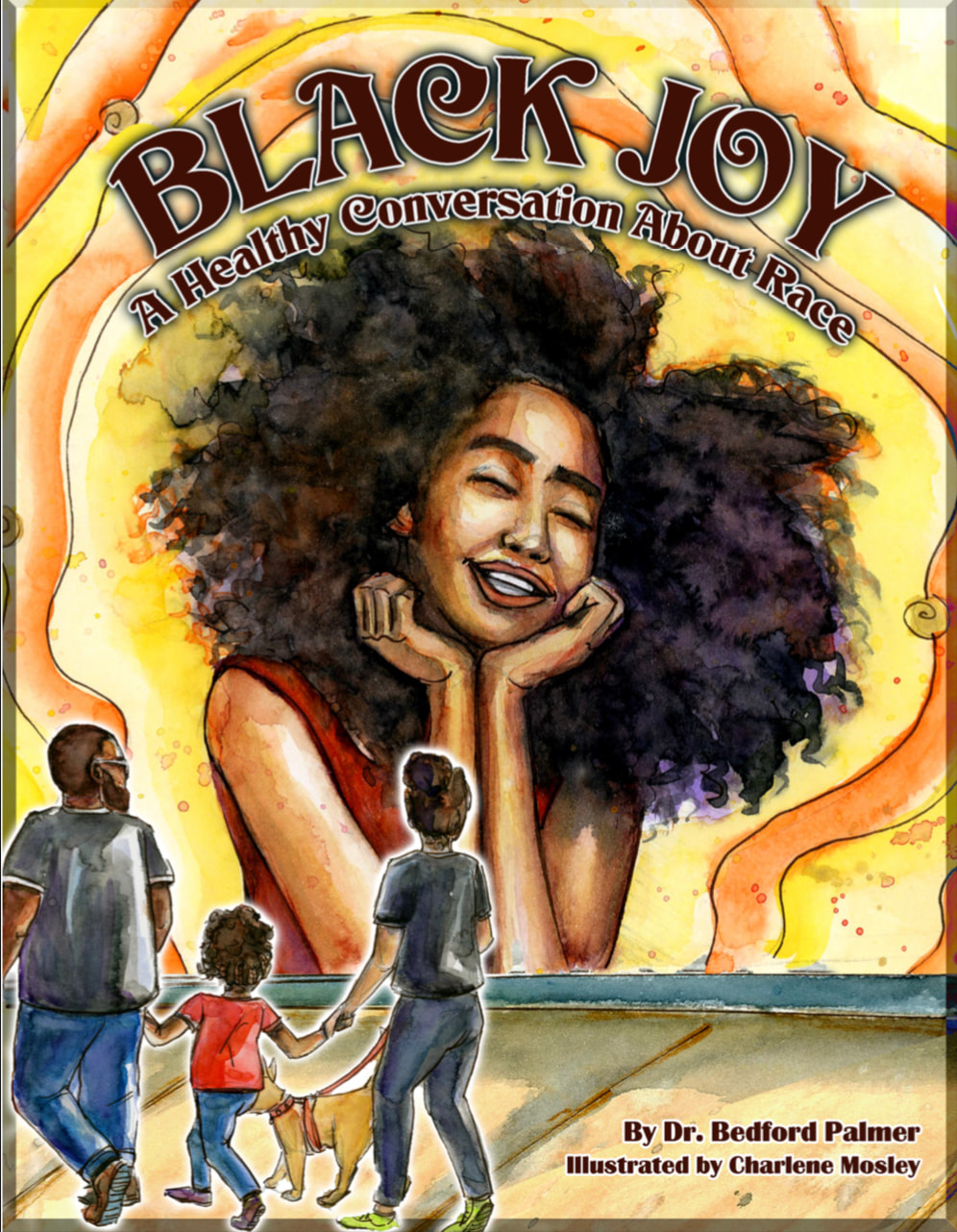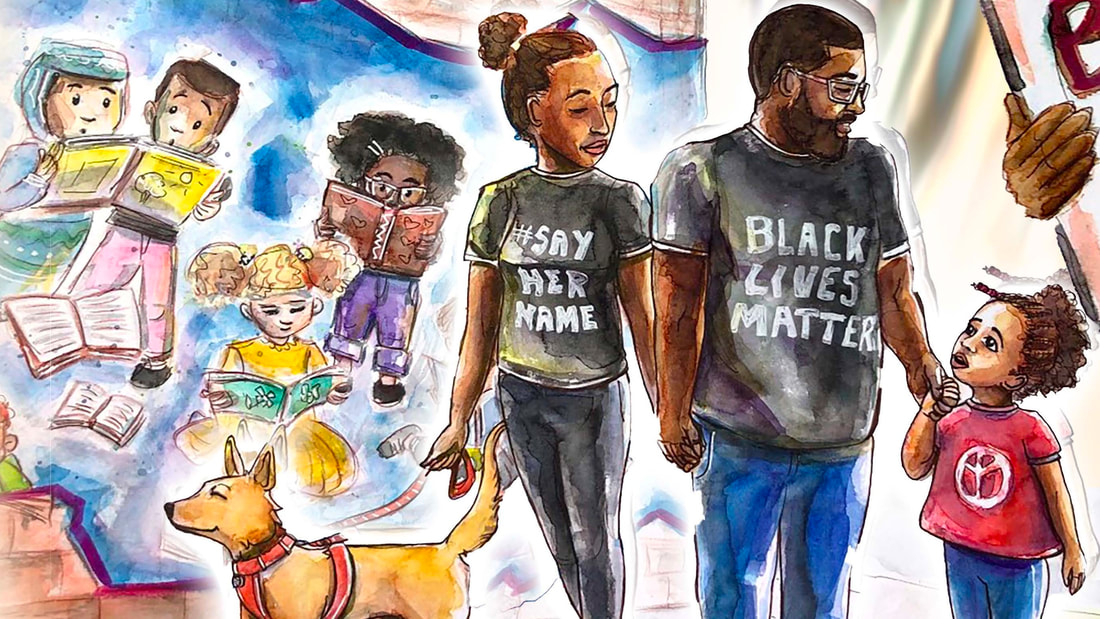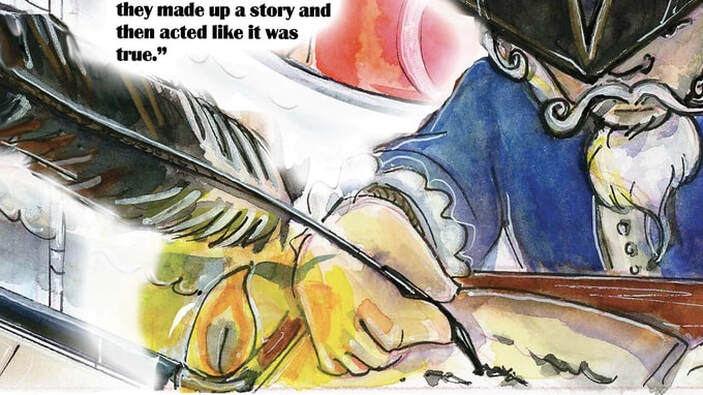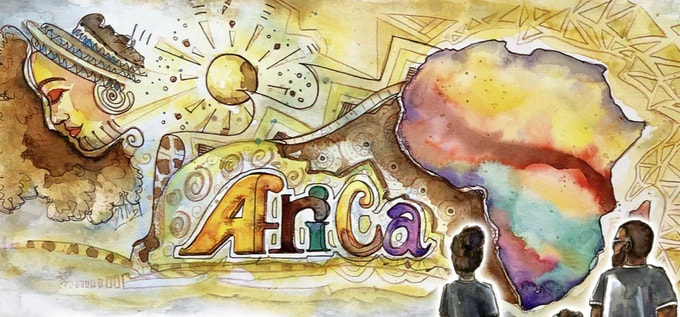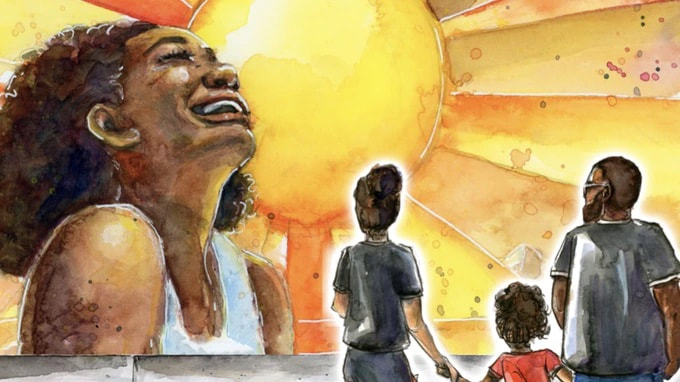Black Joy: A Healthy Conversation About RaceWhile watching a Black Lives Matter protest on the news, Joy notices that her parents are wearing the same t-shirts as the protesters. She looks at her father and asks, "Daddy, why are we Black when our skin is brown?" This question sparks a family conversation where Joy's father explains the origins of race, as the family is transported into the protest march, and they walk through their community looking at the murals that they pass.
Black Joy: A Healthy Conversation About Race directly addresses the concept of race, explaining the origin of race, the social rationale for creating race and for the redefinition of Blackness from being an indicator of oppression to being an indicator of strength and resilience. Available Now!
|
Background
As a Black psychologist, I regularly help adults grapple with the conflicts that come of racialization in the US. The simple question of “why am I Black” is quite complex and requires understanding history, sociology, psychology, and culture. I hope to provide an age-appropriate foundation for this discussion and help parents and teachers feel confident giving their answers. Hopefully, it inspires you to explore your own racial identities further. From bedtime stories to diversity and inclusion training, I hope that children and adults will find a use for this story of a little multi-ethnic Black girl asking important questions.
Learning About Race
The language that professionals and scholars use to talk about the concept of race is necessarily complex and nuanced. Children may not have the vocabulary needed to engage in higher academic discussions about race. However, they do have the capacity to understand their world and talk about how people interact with each other. To translate this complex issue to children, I had to think about what a social construct is at its most basic level. At its base, any social construct begins with a story.
In Black Joy, race is presented as a story that Europeans constructed during the Enlightenment period to justify wanting to “eat all the good foods, and wear all the good clothes, and play with all the best toys” and forced “[other] people to do all of the hardest work.” This approach allows children to build some understanding of the economic motivations behind the construction of race. It also provides an age-appropriate framework for the human cost of the construct of race. Kids understand that it is not ok to take things that do not belong to you or force people to do things that they do not want to do.
Through Black Joy, I attempt to place race within a historical framework, teaching children that the story of race has not always existed and that this story can be changed. In the latter half of the book, race is reframed in terms of identifying with the experiences of love, support, strength, and resilience in Blackness. Joy's parents explained that Black people are more than just the European story. They explain that Blackness is inclusive and that when you change the story to love yourself and your community, you can feel Blackness as Joy.
Through Black Joy, I attempt to place race within a historical framework, teaching children that the story of race has not always existed and that this story can be changed. In the latter half of the book, race is reframed in terms of identifying with the experiences of love, support, strength, and resilience in Blackness. Joy's parents explained that Black people are more than just the European story. They explain that Blackness is inclusive and that when you change the story to love yourself and your community, you can feel Blackness as Joy.
Illustration
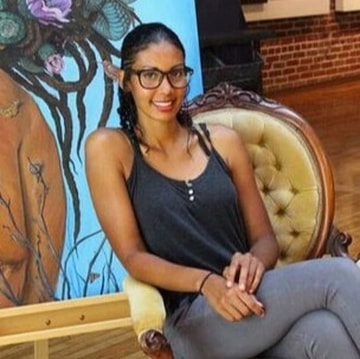
The book's illustrations show the family walking through their neighborhood as part of a Black Lives Matter march. As the family walks through the neighborhood, mural art will illustrate essential concepts. This approach was inspired by the mural art that emerged in cities like Oakland after the social uprisings in 2020. These murals were painted over boarded-up windows, bringing beauty to downtown spaces that reconnected them to their communities.
I was looking for an illustrator who knew how to capture the beauty and complexity of brown skin and was lucky to find Charlene Mosley's work. I asked Ms. Mosley to use vibrant colors and imbue radiance into the characters' brown skin. She used a mixture of traditional watercolor and digital design to produce the book’s artwork, and the result was better than I had imagined.
I was looking for an illustrator who knew how to capture the beauty and complexity of brown skin and was lucky to find Charlene Mosley's work. I asked Ms. Mosley to use vibrant colors and imbue radiance into the characters' brown skin. She used a mixture of traditional watercolor and digital design to produce the book’s artwork, and the result was better than I had imagined.

